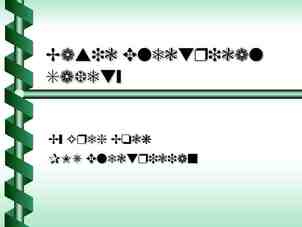WHAT IS INTERVENTIONAL RADIOLOGY? A presentation by the Canadian
20 Slides4.36 MB
WHAT IS INTERVENTIONAL RADIOLOGY? A presentation by the Canadian Association for Interventional Radiology (CAIR) Speaker: [ ] Date: [ ] Venue: [ ] http://www.medicine.dal.ca/departments/department-sites/radiology.html
Real life case A 50 year old man presents to the emergency department with a history of high speed motor vehicle collision. CT scan shows a large liver laceration with active bleeding from a hepatic artery branch You are the ER doctor on shift and you have managed to stabilize his vitals but the patient is still requiring ongoing blood transfusions. What is the appropriate management?
Real life case If you said “Surgery”, you would be wrong. This case will be managed by interventional radiology
Introduction Interventional Radiology (IR) is a relatively new medical field which performs minimally invasive therapies under imaging guidance. Interventional radiologists are physicians who perform these minimally invasive treatments. IR is currently a subspecialty of Radiology: interventional radiologists have completed a diagnostic radiology residency, followed by subspecialty/fellowship training in IR.
What do we do? Vascular/angiography Peripheral Vascular Disease Interventional Oncology Gastrointestinal, Genitourinary, Hepatobiliary Women’s health Biopsies and Drainages Musculoskeletal Neurointerventional
Vascular / Angiography Coiling of splenic artery pseudoaneurysm
Peripheral Vascular Disease Angioplasty and stenting of superficial femoral artery
Interventional Oncology Hepatocellular carcinoma can be treated with Transarterial Chemoembolization (TACE) or Radiofrequency Ablation (RFA)
Gastrointestinal, Genitourinary, Hepatobiliary Percutaneous gastrostomies, nephrostomies, biliary drainages http://patients.uroweb.org/ kidney-ureteral-stones/ emergency/
Women’s Health Uterine fibroid embolization: before and after ttp://www.sirweb.org/patients/uterine-fibroids/
Biopsies and Drainages Diverticular Abscess Drainage
Musculoskeletal Steroid injections for pain relief
Neurointerventional Basilar artery occlusion treated with angioplasty and stenting http://www.cyberounds.com/cmecontent/art141.html?pf yes
Is IR the right career for me? Desire to treat patients and improve morbidity/mortality Prefers performing minimally invasive treatments instead of major surgeries Strong empathy for patients and interest in patient care A team player who enjoys working in a multidisciplinary setting Interest in creative problem-solving and “thinking on the fly” Preferably also enjoys diagnostic radiology and “solving puzzles” with imaging Not afraid of longer work hours than diagnostic radiology, but lifestyle is usually still better than surgery
How do I become an interventional radiologist? Current training pathway: Diagnostic Radiology Residency (5 years) IR Fellowship (1 year) Training pathway will be changing soon: In the near future, the training pathway will involve increasing the duration of IR training to 2 years, but 1 year will be doublecounted within the diagnostic radiology training. This change will allow for more training in clinical skills and IR related imaging. Total length of time will stay the same (6 years). In the more distant future, IR may become its own specialty and have its own residency program
I’m curious what now? GET INVOLVED! All trainees: Find a mentor Do research in IR Medical student: Electives in Diagnostic Radiology, Interventional Radiology Shadow an interventional radiologist Resident: Core IR rotations elective IR rotations
www.cairweb.ca
Get connected Websites: Canadian Association for Interventional Radiology (CAIR) www.cairweb.ca Society of Interventional Radiology (SIR) www.sirweb.org Cardiovascular and Interventional Radiological Society of Europe (CIRSE) www.cirse.org CAIR Annual Meeting Medical students welcome, free registration! Fellows Day, guest lectures, hands-on demonstrations CAIR Medical Student Discovery Nights Selected cities every year Meet and greet with IR staff and residents Free food and drinks, hands-on demonstrations
Acknowledgments Dr. Jason Wong (University of Calgary) for providing many of the images for this presentation. Dr. Edwin Zhang (University of Alberta) for putting together this presentation.
Questions? Speaker Contact Info: [ ]

























